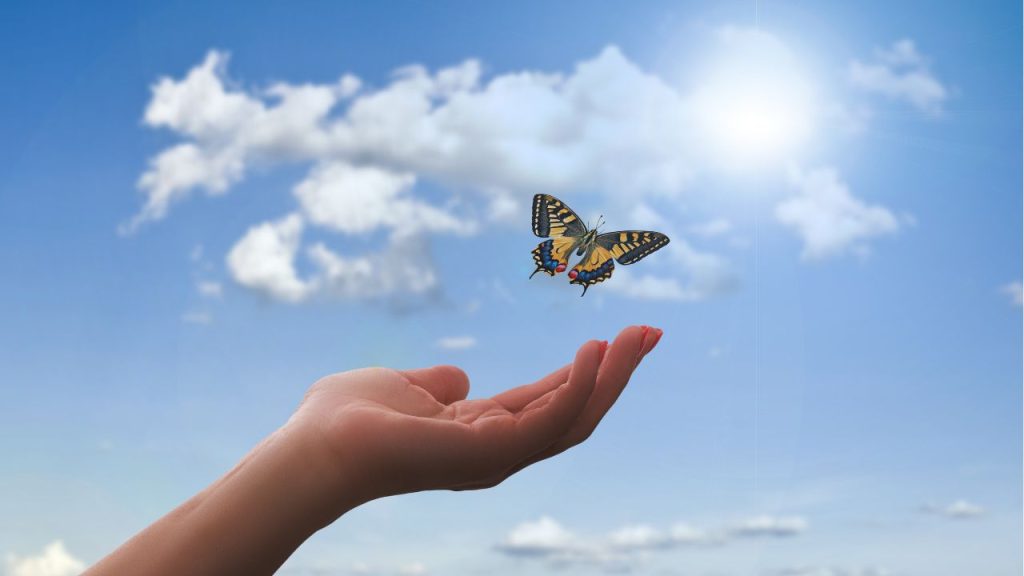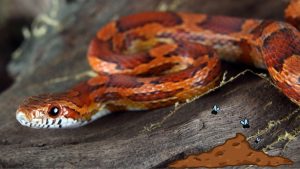A Simple Guide to Understanding Metamorphosis
Caterpillars are fascinating creatures that are well known for their transformation into beautiful butterflies. Children are often fascinated by this process, which is one of the most remarkable in the natural world. In this article, we will explore the journey of a caterpillar to a butterfly, including the different stages of transformation and some interesting facts about these creatures.
The first thing to understand is what a caterpillar is. Caterpillars are the larval stage of butterflies and moths. They are typically long and cylindrical in shape and have a soft body with a head, thorax, and abdomen. Caterpillars are herbivores and feed on leaves, flowers, and other plant parts. They are found in a variety of habitats, from forests to gardens, and come in many different colors and patterns.
The transformation process from caterpillar to butterfly is one of the most remarkable in nature. During this process, the caterpillar undergoes a complete metamorphosis, changing its form completely. The transformation process involves four stages: egg, larva, pupa, and adult. Each stage is distinct and involves different changes in the caterpillar’s body. By the end of this process, the caterpillar has transformed into a beautiful butterfly that can fly and reproduce.
Key Takeaways
- Caterpillars are the larval stage of butterflies and moths.
- The transformation process from caterpillar to butterfly involves four stages: egg, larva, pupa, and adult.
- Caterpillars are herbivores and feed on leaves, flowers, and other plant parts.
What Is a Caterpillar
Caterpillars are the larval stage of butterflies and moths. They are usually plump and worm-like with a segmented body and several pairs of legs. Caterpillars come in a variety of sizes, shapes, and colors, depending on their species.
Life Cycle of a Caterpillar
The life cycle of a caterpillar is divided into four stages: egg, larva, pupa, and adult. The egg stage lasts for a few days to several weeks, depending on the species. Once the egg hatches, the larva emerges. This is the stage where the caterpillar eats and grows. Caterpillars shed their skin several times during this stage as they outgrow their exoskeleton.
After the caterpillar has grown to its full size, it enters the pupa stage. During this stage, the caterpillar transforms into a butterfly or moth. It spins a cocoon or chrysalis around itself, which protects it as it undergoes metamorphosis. The pupa stage can last for a few weeks to several months, depending on the species.
Finally, the adult butterfly or moth emerges from the cocoon or chrysalis. It spreads its wings and flies away to mate and lay eggs, starting the life cycle all over again.
Types of Caterpillars
There are over 20,000 species of caterpillars in the world, each with its unique characteristics. Some caterpillars have spines or hairs that can cause irritation or even be poisonous to predators. Others have bright colors or patterns that help them blend in with their surroundings or warn predators that they are toxic.
Some common types of caterpillars include:
-
Monarch caterpillars: These caterpillars are famous for their distinctive black, white, and yellow stripes. They feed on milkweed plants and are toxic to predators.
-
Tent caterpillars: These caterpillars live in communal tents made of silk and feed on the leaves of trees.
-
Woolly bear caterpillars: These caterpillars have a fuzzy appearance and are known for their ability to survive cold temperatures.
Overall, caterpillars are fascinating creatures that play an essential role in the ecosystem as a food source for other animals and as pollinators once they transform into butterflies or moths.
Transformation Process
The transformation process of a caterpillar to a butterfly is a fascinating phenomenon that has captivated the imagination of children and adults alike. It is a complex process that involves three distinct stages: The Caterpillar Stage, The Chrysalis Stage, and The Butterfly Stage.
The Caterpillar Stage
The first stage of the transformation process is the caterpillar stage. It begins when a female butterfly lays her eggs on a leaf or stem of a plant. Inside the egg, a tiny caterpillar grows, which emerges after a few days. The caterpillar spends most of its time eating leaves and growing. During this stage, the caterpillar sheds its skin several times to accommodate its increasing size.
The Chrysalis Stage
The second stage of the transformation process is the chrysalis stage. After the caterpillar has grown to its full size, it attaches itself to a leaf or twig and sheds its skin for the last time. Underneath the skin, the caterpillar has formed a hard shell called a chrysalis. Inside the chrysalis, the caterpillar undergoes a remarkable transformation. Its body breaks down into a soupy substance, and from this soup, a butterfly emerges.
The Butterfly Stage
The third and final stage of the transformation process is the butterfly stage. After emerging from the chrysalis, the butterfly has to wait for its wings to dry and harden before it can fly. During this stage, the butterfly feeds on nectar from flowers and mates to produce offspring. The lifespan of a butterfly varies depending on the species, but it typically ranges from a few days to a few weeks.
In conclusion, the transformation process of a caterpillar to a butterfly is a remarkable feat of nature. It is a complex process that involves three distinct stages, each with its unique characteristics. By understanding the transformation process, children can gain a greater appreciation for the beauty and complexity of the natural world.
Diet and Habitats
Caterpillar Diet
Caterpillars are the larval stage of butterflies and moths. They are known for their voracious appetites and can consume a large amount of food in a short period of time. Caterpillars have a specialized diet based on the species they belong to. Some species feed on specific plants, while others are more generalist and can feed on a variety of plants.
For example, the Monarch caterpillar feeds exclusively on milkweed plants, while the Eastern Black Swallowtail caterpillar feeds on plants in the carrot family. Some caterpillars are even carnivorous, such as the Harvester caterpillar, which feeds on aphids.
Butterfly Diet
Butterflies have a different diet than caterpillars. They feed on nectar from flowers, which provides them with the energy they need for flight and other activities. Butterflies have a long tongue called a proboscis, which they use to suck up nectar from flowers.
In addition to nectar, some species of butterflies also feed on other liquids, such as sap, rotting fruit, and even animal dung. Some species of butterflies also feed on pollen, which provides them with protein and other nutrients.
Caterpillar Habitats
Caterpillars can be found in a wide variety of habitats, depending on the species they belong to. Some species are found in forests, while others are found in grasslands or wetlands. Some species are even found in urban areas.
Caterpillars typically feed on the leaves of plants, so they are often found on or near their food source. Some species of caterpillars are known to be pests of crops and can cause significant damage to agricultural crops.
Butterfly Habitats
Butterflies also have a wide range of habitats, depending on the species they belong to. Some species are found in forests, while others are found in meadows or open fields. Some species are even found in deserts or at high altitudes.
Butterflies require a variety of habitats throughout their life cycle. They need food sources for their caterpillars, as well as nectar sources for the adult butterflies. They also need suitable breeding sites, such as host plants for their eggs and sheltered areas for their chrysalises. Some species of butterflies are also migratory and travel long distances to find suitable habitats for their life cycle.
Interesting Facts
Caterpillars and butterflies are fascinating creatures that have captured the imaginations of kids and adults alike. Here are some interesting facts about these insects that your kids will love:
-
Caterpillars have a lot of eyes: Caterpillars have six pairs of tiny eyelets known as stemmata, arranged in a semi-circle around their head from one side to the other. Even with so many eyelets, the caterpillars do not see images and colors.
-
Butterflies can taste with their feet: Butterflies have taste receptors on their feet, which they use to taste the food source before laying eggs on it.
-
Butterflies are cold-blooded: Butterflies are cold-blooded creatures, which means their body temperature is regulated by the temperature of their surroundings. They bask in the sun to warm up and can become sluggish in cooler temperatures.
-
Butterflies can fly long distances: Some butterfly species, such as the monarch butterfly, can fly for thousands of miles during their annual migration.
-
Caterpillars grow very quickly: Caterpillars can grow up to 27,000 times their size in just a few weeks.
-
Butterflies are important pollinators: Butterflies are important pollinators, just like bees. They help plants reproduce by transferring pollen from one flower to another.
-
Butterflies have a short lifespan: Most butterflies only live for a few weeks or months, with some living up to a year.
-
Caterpillars shed their skin: As caterpillars grow, they shed their skin several times. This process is called molting.
-
Butterflies have a special proboscis: Butterflies have a long, straw-like proboscis that they use to suck nectar from flowers. When they are not using it, they coil it up like a spring.
These are just a few interesting facts about caterpillars and butterflies that your kids will find fascinating. Encourage them to learn more about these creatures and their life cycle.
Conclusion
In conclusion, the transformation from a caterpillar to a butterfly is a remarkable process that involves a series of physical changes. It is fascinating to observe how the caterpillar goes through different stages of development and emerges as a beautiful butterfly.
Throughout their life cycle, butterflies play an essential role in pollination, which helps in the growth of plants and flowers. They are also a crucial part of the food chain, providing a source of food for birds and other animals.
It is important to note that not all caterpillars turn into butterflies. Some caterpillars transform into moths, which have their unique set of characteristics and behaviors. Additionally, it is essential to respect the natural habitat of these insects and avoid disturbing their life cycle.
By learning about the life cycle of butterflies, children can gain a better understanding of nature and the environment. They can also develop an appreciation for the beauty and diversity of the world around them. Encouraging children to observe and learn about butterflies can be an excellent way to foster their curiosity and love for nature.
Overall, the transformation from a caterpillar to a butterfly is a fascinating process that is both educational and entertaining. By observing and learning about these insects, children can gain a better understanding of the natural world and develop a sense of wonder and appreciation for the environment.
Frequently Asked Questions
What is the process called when a caterpillar turns into a butterfly?
The process of a caterpillar turning into a butterfly is called metamorphosis. It is a complete change in the body form and structure of the caterpillar to become a butterfly.
What are the stages of a caterpillar turning into a butterfly?
The stages of a caterpillar turning into a butterfly are: egg, larva (caterpillar), pupa (chrysalis), and adult butterfly. The egg hatches into a caterpillar, which then eats and grows until it forms a chrysalis. Inside the chrysalis, the caterpillar transforms into an adult butterfly.
What are the five stages of a butterfly’s life cycle?
The five stages of a butterfly’s life cycle are: egg, larva (caterpillar), pupa (chrysalis), adult butterfly, and egg-laying adult. The egg hatches into a caterpillar, which then eats and grows until it forms a chrysalis. Inside the chrysalis, the caterpillar transforms into an adult butterfly. The adult butterfly lays eggs, and the cycle begins again.
How long does it take for a butterfly to complete its life cycle?
The length of time it takes for a butterfly to complete its life cycle depends on the species and environmental conditions. Generally, it takes about a month for a butterfly to complete its life cycle from egg to adult.
What are some resources to teach kids about the life cycle of a butterfly?
There are many resources available to teach kids about the life cycle of a butterfly, including books, videos, and online resources. The Children’s Butterfly Site and National Geographic Kids are great places to start.
What are some fun activities to teach kids about the transformation from caterpillar to butterfly?
There are many fun activities to teach kids about the transformation from caterpillar to butterfly, including raising caterpillars, creating butterfly gardens, and making butterfly crafts. Kids can also learn about the different stages of a butterfly’s life cycle by creating a butterfly life cycle wheel or by watching videos of butterflies emerging from their chrysalis.
Author
-

Lawrence, the founder of Pet Ploy, established the website in mid-2023. With a lifelong love for pets, Lawrence has been surrounded by a variety of animals since his early years. From dogs and cats to guinea pigs, rabbits, fish, and more, he has experienced the joy of caring for a diverse range of pets. Drawing from his deep-rooted passion, Lawrence created Pet Ploy to share his knowledge and enthusiasm with fellow pet enthusiasts. Through the platform, he aims to provide valuable insights, tips, and resources to promote the well-being and happiness of pets everywhere.










